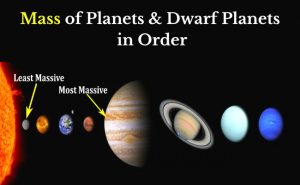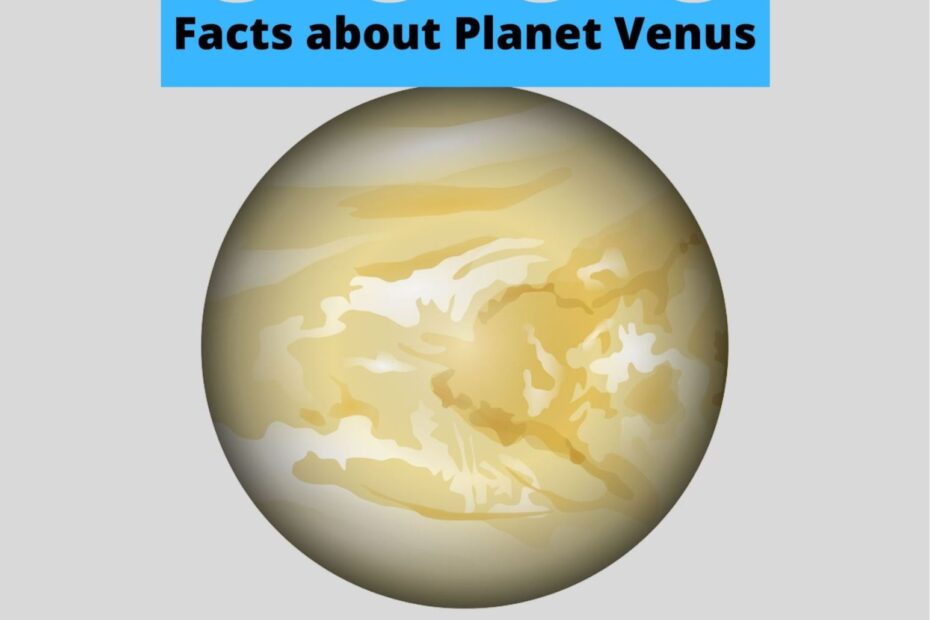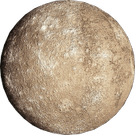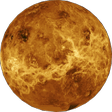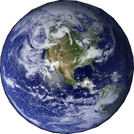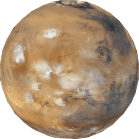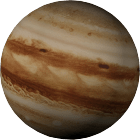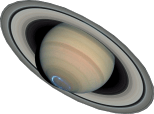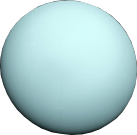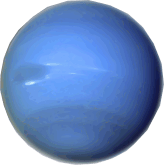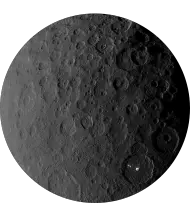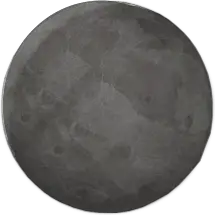Venus is the 2nd planet from the sun and this article has mentioned interesting facts about Venus Planet and other information. Planet Venus is named after the Roman Goddess of Love and is the only planet named after a female.
Venus is a terrestrial planet and has a Rocky surface like Mercury, Earth, Mars. It is the second-fastest planet to orbit around the sun (225 days) after Mercury (88 days) but it takes a longer period to rotate around its axis (243 earth days) than any other planet in the solar system.
Characteristics of Venus:-
- Orbital period (1 year): 224.7 days (0.62 earth years)
- Revolution period (1 day): 243 earth days
- Average orbital speed: 35.03 km/sec around the sun
- The average distance from Sun: 108,208,000 km
- Mean radius: 6052 km (0.95 times of earth)
- Mass: 4.87 × 1024 kg (0.82 times of earth)
- Volume: 9.3 × 1011 km3(0.87 times of earth)
- Average density: 5.24 gm/cm3
- Surface gravity: 8.87 m/sec2(0.91 times of earth)
- Escape velocity: 10.36 km/sec
- Average surface temperature: 462 °C
- Moons: No known moons
Facts about Venus Planet:-
Here we have described some interesting facts about Venus and other relevant information about the planet Venus. I hope some of these might amaze you:
-
Venus rotates in the opposite direction (clockwise)
Planet Venus rotates around the sun in the opposite direction than other planets rotate except planet Uranus. It revolves around the sun in a clockwise direction if viewed from the north pole star Polaris. This rotation is called the retrograde rotation of the planet.
Scientists believe that the retrograde motion of Venus is because of its collision with an asteroid that changed the direction of the rotation. (Know here about Retrograde and Prograde Motion).
An interesting fact of Venus Planet is that If you were standing on Venus, you will see the Sunrise in the West direction and set in the East direction.
-
One day is longer than one year on Venus
Planet venus has the slowest rotational motion around its axis. It completes one rotation in 243 earth days about its axis. While the orbiting period around the sun is 224.7 earth days.
One of the most interesting facts about venus is that “one day is longer than one year”. So planet Venus completes its one year before completing its one day.
-
Brightest planet in the sky
Planet Venus is the brightest planet in the solar system. It is the 3rd brightest object in the sky after the Moon and the Sun. We can often see it from the earth a few hours before sunrise and after sunset. And this information is also one of the cool venus planet facts.
It looks brighter because of its thick atmospheric clouds (93 times thicker than the earth’s atmosphere). These clouds are made of mostly Sulphuric acids and reflect most of the sun’s lights that reach the surface.
-
The hottest planet in the solar system
Though planet Venus is not closest to the Sun, still it is the hottest planet of our solar system. (Planet mercury is closest to the Sun: Here know more about Planet Mercury).
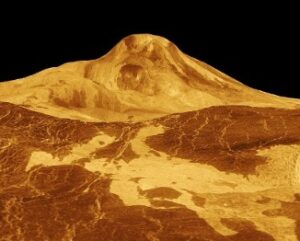
This planet is hottest because of its thick atmospheric cloud of Carbon dioxide (CO2). These clouds create an extreme greenhouse effect on the surface of the planet Venus. Because of this high greenhouse effect, the CO2 made clouds absorbs most of the Sun’s heat.
The mean surface temperature of the planet Venus is around 462 ºC (or 863 ºF). This high temperature is enough to melt the lead and tin. And it is one of the interesting facts about venus planet.
-
1st planet to viewed by a spacecraft
Planet Venus was the prime target for space exploration because it was near to earth. So it is the first planet visited by a spacecraft.
The Russian had launched a robotic space probe for Venus planet in Venera Mission 1961, but it lost contact. A spacecraft (Mariner 2 in 1962) by the USA becomes the first to complete a successfully interplanetary mission in the world. This spacecraft passed 34800 km above the surface of Venus to collect information about the planet’s atmosphere.
-
The closest planet to earth (Closest Possible)
It is the nearest planet from the Earth when it is in line with the sun and earth. The closest possible distance would be around 38 million kilometers between the Earth and Venus.
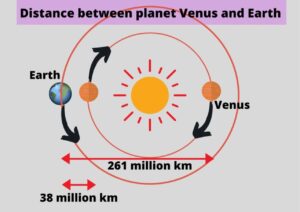
While rotating around the sun’s orbit, sometimes planet Venus reaches its farthest point from the earth. The farthest distance between the Earth and Venus is approximately 261 million kilometers. So basically the difference between the distance of Venus varies 223 million kilometers from the earth.
-
Extreme pressure to crush even asteroids
Planet Venus has extremely high atmospheric pressure. The atmospheric surface of Venus is composed of dense CO2 consisting of Nitrogen and Sulphuric Acid. This made a high-pressure atmosphere on the surface of Venus.
The pressure at its surface is 92 times higher than the pressure at the earth’s surface. This pressure will be equivalent to 1000 meters below the earth’s ocean. The Density of this cloud is around 6.5% of water density and 5000% (or 50 times more) of the earth’s atmospheric density.

Venus has enough pressure to crush the small size asteroids entering the atmosphere. Because of its high pressure, this planet has not small craters on the surface (none of the craters is smaller than 3 km).
Also Read:- All about Asteroids
-
It has 5 interesting nicknames
Planet Venus is known as 5 other names that are its nicknames:
- Evening Star,
- Morning Star,
- Earth’s Twin,
- Earth’s Sister,
- Veiled planet.
It has the name ‘morning star and evening star’ because it can be seen from the earth in the evening as well as in the morning.
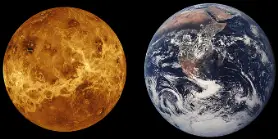
Venus looks the same as the earth in size and mass, so it is known as ‘Earth’s Twin’ and Earth’s Sister.
Venus is surrounded by thick atmospheric clouds around it, so it is called ‘Veiled Planet’ because ‘veil’ means ‘to cover’. One of the facts about Venus is, this high-density atmospheric cloud generates the strongest greenhouse effect in our solar system.
-
Venus does not have any moons
Planet venus does not have any natural satellites/moons that can orbit around it. This planet also does not have any rings as giant planets have.
-
Has more Volcanoes than any other planets (Venusian Volcanoes)
Planet Venus has so many Volcanoes than any of the planets in the solar system. Astronomers believe that there are more than 1600 volcanoes on its surface.
Most volcanoes are small in size but approximately 168 volcanoes are large and broad. These large volcanoes are spread beyond 100 km in range.
-
Billions of years ago, Venus had liquid water and an atmosphere like Earth
Studies show that billions of years ago, Planet Venus used to had approximately the same atmosphere as our Earth has. And there could also have been an ample amount of liquid water present on the surface of it.
But the evaporation of that water caused the critical amount of greenhouse gases in its atmosphere. That led a high pressure on it.
-
There could be life present on Venus
A recent study in August 2020 found phosphine in the atmosphere of Venus. And it led to a hypothesis that there could be a type of life present in the upper atmosphere of Venus.
These lives can be there almost 50 km above the surface but they could be not earth-like life. At this height, the temperature is around just 335 K but the atmosphere is acidic.
So, these were some interesting information and facts about Venus Planet. Still, scientists continuously searching for this planet and much more information will be disclosed about Venus Planet in the future.
You may also like checking about other planets of our solar system below:
Also check these all 8 planets and 5 dwarf planets:-
- How Many Planets Exist in the Universe — A Cosmic Estimate
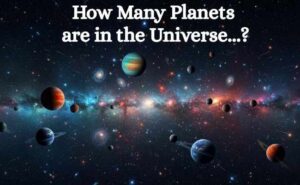
- 5 Best Solar System Backpacks in 2025

- Mass of Planets in Order from Lightest to Heaviest
